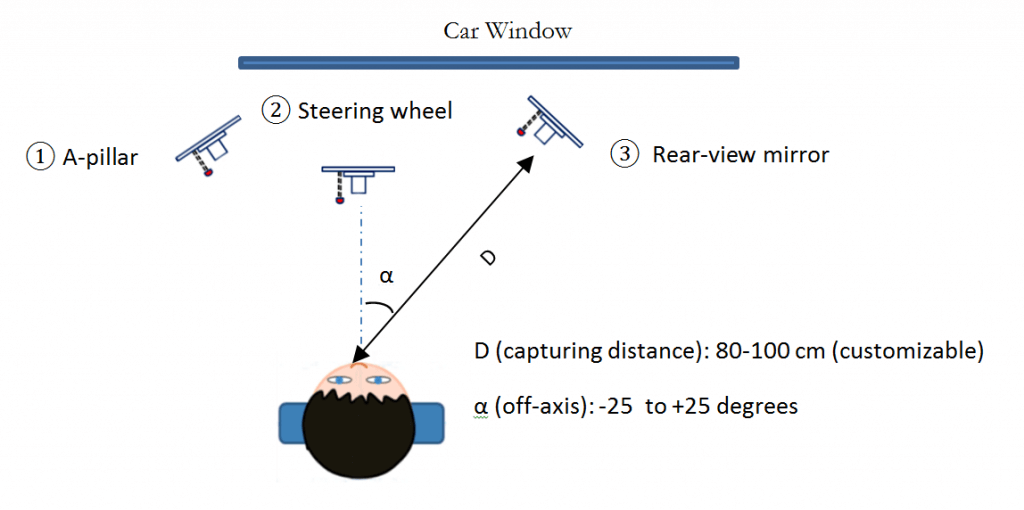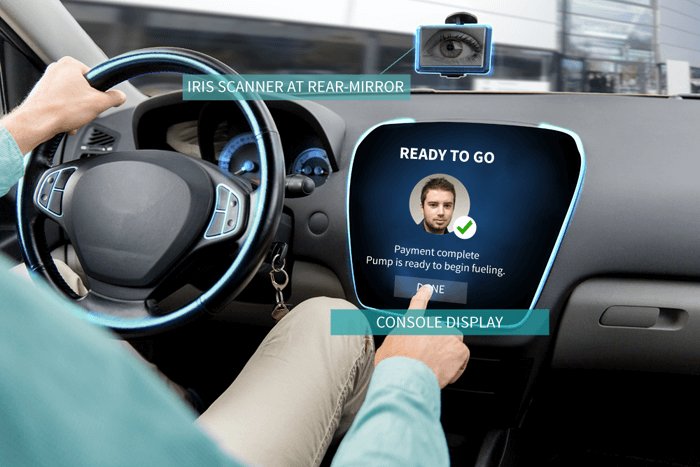Blogs
Iris Solution for Automotive
17 December, 2021
Thanks to its well-known high accuracy, robustness, non-touch nature, and the ability to work in dark environment, iris recognition is making its way into car applications. Markets and Markets research firm predicted that the iris automotive market will grow from USD 51.02 million in 2013 to USD 215.25 million by 2020, at a CAGR of 22.63% between 2015 and 2020.
Before starting the engine, the iris camera flashes its IR LED and automatically captures the iris images. Iris identification will then be done automatically. The iris camera can be placed on the rear view mirror, the A-pillar, or the steering wheel as those places are close enough to the driver’s eyes but do not occlude his/her view while driving the car.

After successful user authentication, vehicles will be able to adjust settings to accommodate different driving styles, driver profiles including maps, music, phone book, etc. When the car is connected to a payment system, it can also perform cashless in-car payments at gas stations, drive-through stores or parking lot.

Furthermore, while normal iris cameras on the market are unable to capture clean iris images under direct sunlight, due to reflections in the eyes, IriTech’s Iris solution for automotive is tailored with outdoor capturing technology which removes reflections from the iris to improve performance. Especially, IriTech’s robust side-gazing technology which allows the system to capture iris images at up to 25 degree angle up/down and right/left will allow drivers remain focusing on driving and have iris detected at the same time instead of looking straight at the camera.
Applications of iris solution for automotive:

In addition, IriTech’s precise localization of pupil center and eyelid border technology can be integrated into the iris camera to detect drowsy eyes and warn drivers before they fall asleep or it could alert him or her to potential dangers outside the vision. The same technology can also be used in AR/VR applications to improve the accuracy of eye-tracking feature; hence gives user a greater experience.
